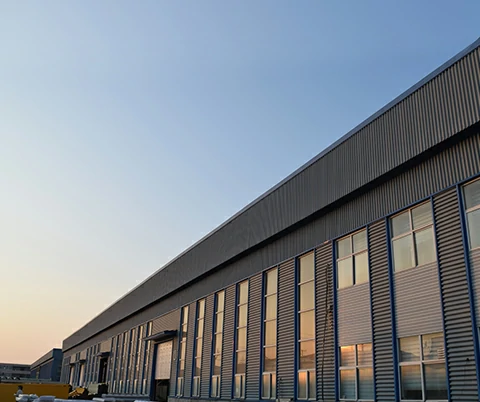loading...
- No. 9, Xingyuan South Street, Dongwaihuan Road, Zaoqiang County, Hengshui, Hebei, China
- admin@zjcomposites.com
- +86 15097380338
- Welcome to visit our website!
Fiber Reinforced Polymer Grating Solutions for Enhanced Structural Performance and Durability Applications
Exploring Grating Made of FRP Advantages and Applications
In today's world where sustainability and efficiency are paramount, the use of advanced materials in construction and manufacturing has gained significant importance. One such material that has emerged as a game changer is Fiber Reinforced Plastic (FRP), particularly in the production of grating. FRP grating offers a multitude of advantages over traditional materials like steel, aluminum, and wood, making it an excellent choice for various applications across multiple industries.
FRP grating is made by combining a polymer resin with reinforcing fibers, typically glass or carbon fibers. This unique construction results in a lightweight yet strong material that is resistant to corrosion, chemicals, and UV rays. One of the standout features of FRP grating is its durability; it does not rust or decay like metal or wood, making it particularly appealing for applications in harsh environments such as chemical plants, wastewater treatment facilities, and marine settings.
Advantages of FRP Grating
1. Corrosion Resistance Traditional metal grating can corrode over time, especially in environments exposed to moisture or aggressive chemicals. FRP grating, on the other hand, is impervious to corrosion, leading to lower maintenance costs and longer service life.
2. Lightweight Design With a significantly lower weight compared to steel or aluminum grating, FRP is easier to handle, transport, and install. This lightweight nature can also reduce structural load requirements, allowing for more innovative designs where the weight of the structure is a concern.
3. Safety Features FRP grating comes in various surface textures to provide excellent slip resistance, making it a safer option for walkways, platforms, and stairways. Additionally, its non-conductive nature makes it an excellent choice in environments where electrical hazards may be present.
4. Versatility FRP grating is available in different sizes, shapes, and colors, making it suitable for various applications—from industrial facilities to recreational areas. Its adaptability allows for custom solutions that meet specific needs, whether for aesthetic purposes or functional requirements.
5. Eco-Friendliness Many FRP products are manufactured using recyclable materials, contributing to sustainable building practices. Using FRP grating can also lead to energy savings, as the lightweight materials require less energy during transportation and installation.
grating de frp

Applications of FRP Grating
The versatile nature of FRP grating makes it suitable for a wide range of applications across various sectors
- Industrial and Chemical Plants Due to its resistance to corrosive substances, FRP grating is ideal for environments like chemical processing plants, where traditional materials would quickly degrade.
- Wastewater Treatment The long-term durability of FRP grating makes it perfect for use in wastewater treatment facilities, where exposure to harsh chemicals and moisture is prevalent.
- Marine Environments In shipbuilding and offshore oil rigs, FRP grating offers an ideal solution for walkways, platforms, and other structures that are frequently exposed to saltwater.
- Architectural Features Beyond industrial applications, FRP grating can enhance aesthetic designs in parks, walkways, and other public spaces, combining functional performance with visual appeal.
Conclusion
The benefits of FRP grating cannot be overstated. Its unique properties make it an excellent alternative to traditional materials, offering enhanced durability, safety, and versatility. As industries continue to innovate and prioritize sustainability, the adoption of FRP grating is expected to rise, solidifying its place as a key material in modern construction and manufacturing practices. Whether for industrial use or architectural design, FRP grating stands out as a smart investment for the future.
-
The Rise of FRP Profiles: Strong, Lightweight, and Built to LastNewsJul.14,2025
-
SMC Panel Tanks: A Modern Water Storage Solution for All EnvironmentsNewsJul.14,2025
-
GRP Grating: A Modern Solution for Safe and Durable Access SystemsNewsJul.14,2025
-
Galvanized Steel Water Tanks: Durable, Reliable, and Ready for UseNewsJul.14,2025
-
FRP Mini Mesh Grating: The Safer, Smarter Flooring SolutionNewsJul.14,2025
-
Exploring FRP Vessels: Durable Solutions for Modern Fluid HandlingNewsJul.14,2025
-
GRP Structures: The Future of Lightweight, High-Performance EngineeringNewsJun.20,2025
